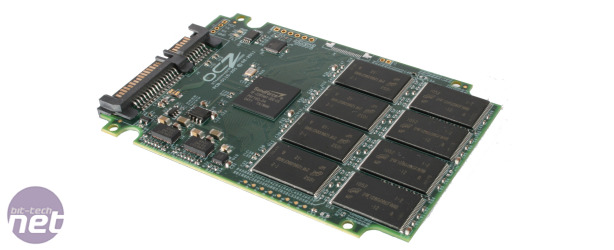
Performance Analysis
Despite our limited time with the Vertex 3, and our trepidations about testing it with a now defunct Sandy Bridge platform, it’s clear from our theoretical tests that the Vertex 3 offers is a huge step forward in performance.SandForce SF-1222-based SSDs perform poorly in AS SSD, but the Vertex 3 managed to achieve a humongous 506MB/sec sequential read speed in this, crushing the C300 256GB. While the Vertex 3’s sequential write performance in AS SSD wasn’t anywhere near the drive’s theoretical maximum, this is to be expected given the incompressible workload. It's also worth noting that a sequential write speed of 220MB/sec is still a large improvement over the 80MB/sec we've previously seen from SandForce 1222-based SSDs in this test. AS SSD’s random tests also bode well for the Vertex 3 when handling incompressible data. While not king of the kill when handling single-thread or 64-thread random reads, the Vertex 3 was top dog with random writes, managing a superb 220MB/sec random write speed in the 64 thread test.
The drive's performance in ATTO was much better, thanks to its highly compressible data load. It’s here that OCZ gets its big performance figures, and our testing appears to back them up. With 1,024KB writes, the Vertex 3 manages a massive write speed of 515MB/sec and an equally impressive 1,024KB read speed of 538MB/sec. These may be the best case scenarios for the SandForce controller, but it’s still impressive that the drive is capable of these awesome speeds.
SandForce 2281 - Very, very quick, but you'll need Sandy Bridge to get the best out of it
While our real world tests will have to wait until our full review when the drive is officially released (the sample we’ve looked at today is only a beta model), we've had a chance to use the Vertex 3 in our systems this week and found that its speeds err more towards those in AS SSD rather than ATTO in general use. When copying programs, music and videos, we saw the drive’s write speeds peak at 220MB/sec rather than the 500MB/sec seen in ATTO. Even so, these speeds from a £200 SSD are still fantastic, especially when you consider the 500MB/sec read speeds that are present regardless of the workload. The potential from such a sizeable increase in read speed is clear, and when Sandy Bridge motherboards finally reappear sometime in March/April, this drive could prove to be the perfect partner.
However, it's worth bearing in mind that, right now, it's only the Sandy Bridge platform that's able to take advantage of the Vertex 3’s ludicrously quick headline speeds. Marvell's 91xx SATA 6Gbps controller chips that are used to provide SATA 6Gbps ports on X58 and P55 motherboards will almost always be connected via a single PCI-E 2.0 lane, which theoretically peaks at 500MB/sec, but realistically only delivers 400MB/sec. It’s a case of products moving faster than the platform, and that means than only owners of native SATA 6Gbps systems will get the full performance of the drive.
Still, we’re excited about this new SandForce controller, especially as it seems to be much more well-rounded than its predecessor. OCZ tells us that the drive should be shipping sometime in the next few months, just in time for the Sandy Bridge relaunch, and in the same window as the competing Gen 2 Marvell drives. We’ll withhold our judgement until all the drives are available, but it looks as though Marvell and Indilinx will need to produce something very special indeed to challenge SandForce in this generation.

MSI MPG Velox 100R Chassis Review
October 14 2021 | 15:04









Want to comment? Please log in.